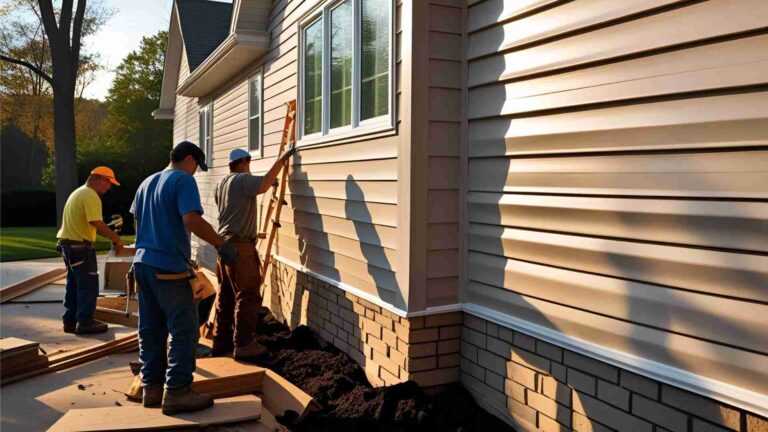How To Calculate Your Home’s Linear Footage
Understanding how to calculate linear footage is a fundamental skill for homeowners, contractors, and DIY enthusiasts embarking on home improvement or moving projects. Linear footage, a one-dimensional measurement of length in feet, is essential for determining material quantities for tasks like installing baseboards, crown molding, or fencing, and it plays a critical role in estimating costs for moving services like U-Pack. This comprehensive guide will walk you through the concept of linear footage, provide step-by-step instructions for measuring it, and explain its applications in various contexts, ensuring you can tackle your projects with confidence and precision.
What is a Linear Foot?
A linear foot is a straightforward measurement of length, equal to 12 inches or 30.48 centimeters, taken in a straight line. Unlike square footage, which measures area, or cubic footage, which measures volume, linear footage focuses solely on length, making it a one-dimensional metric. The term “linear” emphasizes that the measurement follows a straight path, distinguishing it from curved or circular measurements.
Linear footage is widely used across industries, particularly in construction, woodworking, and moving. For example, materials like lumber, flooring, fencing, and trim are often sold by the linear foot, allowing for precise purchasing based on length requirements. In the context of moving, companies like U-Pack use linear footage to calculate the space occupied in a trailer, directly impacting the cost of the move.
Why Linear Footage Matters
Linear footage is critical for several reasons:
- Material Estimation: It ensures you purchase the exact amount of materials needed for projects, reducing waste and saving money.
- Cost Calculation: For moving services like U-Pack, linear footage determines pricing, as you only pay for the trailer space you use.
- Project Planning: Accurate measurements help you plan layouts, whether you’re installing baseboards or designing a fence.
By mastering linear footage calculations, you can approach your projects with clarity and efficiency.
How to Measure Linear Footage
Calculating linear footage is one of the simplest measurements you can perform, requiring minimal tools and no complex math. Below is a detailed step-by-step guide to measuring linear footage for various applications.
Tools You’ll Need
To measure linear footage accurately, gather the following tools:
- Tape Measure: A sturdy tape measure with clear markings is essential for precise measurements.
- Notepad and Pen: Record measurements to avoid errors and keep track of multiple dimensions.
- Calculator: Useful for converting measurements or summing totals, especially for larger projects.
Step-by-Step Guide to Measuring Linear Footage
- Identify the Area or Object to Measure
Determine what you need to measure, such as a wall for baseboards, a window for a sill, or the perimeter of a yard for fencing. For moving with U-Pack, you’ll measure the length of items loaded into the trailer. - Measure the Length in Feet
Use a tape measure to measure the length of the object or space in a straight line. If the measurement is already in feet, you’re done—this is the linear footage. For example, a wall that measures 10 feet long equals 10 linear feet. - Convert Measurements if Necessary
If your tape measure provides measurements in inches, divide the total by 12 to convert to feet. For instance, 96 inches ÷ 12 = 8 linear feet. For metric measurements, convert centimeters to feet by dividing by 30.48 (e.g., 304.8 cm ÷ 30.48 = 10 linear feet). - Sum Multiple Measurements
If measuring multiple segments (e.g., several walls for baseboards or multiple pieces of lumber), measure each segment individually and add the lengths together. For example, four walls measuring 8, 8, 12, and 12 feet yield a total of 40 linear feet (8 + 8 + 12 + 12 = 40). - Account for Overhang or Waste
For construction projects, consider adding extra length for overhangs (e.g., for window sills) or waste due to cutting errors. A common practice is to add 10% to your total linear footage to ensure you have enough material. - Double-Check Your Measurements
Verify each measurement to ensure accuracy. Re-measure if necessary to confirm consistency, especially for critical applications like moving or purchasing expensive materials.
Example: Measuring Linear Footage for Baseboards
Suppose you’re replacing baseboards in a 1400-square-foot home. You measure the perimeter of each room:
- Living Room: Two walls at 15 feet each, two walls at 10 feet each. Total = 15 + 15 + 10 + 10 = 50 linear feet.
- Bedroom 1: Four walls at 12 feet each. Total = 12 + 12 + 12 + 12 = 48 linear feet.
- Hallway: Two walls at 10 feet each. Total = 10 + 10 = 20 linear feet.
Summing these, the total linear footage is 50 + 48 + 20 = 118 linear feet. Adding a 10% buffer (118 × 1.1), you get approximately 130 linear feet of baseboard material needed.
Linear Footage in Moving with U-Pack
When moving with U-Pack, linear footage is a key factor in determining your moving costs. U-Pack offers a flexible and affordable solution for long-distance moves, charging based on the linear footage you use in their trailer, with a minimum of 5 linear feet. This pay-for-what-you-use model makes it ideal for those looking to save money.
How U-Pack Uses Linear Footage
U-Pack provides a moving trailer or ReloCube, and you load your belongings into it. The linear footage is calculated by measuring the length of the trailer space occupied by your items, from the front of the trailer to the back of your load. A divider is placed behind your belongings to secure them, and you’re charged only for the space up to that point.
For example, if your belongings occupy 10 linear feet of a 28-foot trailer, you pay for 10 linear feet at the per-foot rate specified in your quote. If you use less space than estimated, your cost decreases; if you use more, it increases accordingly.
Estimating Linear Footage for a U-Pack Move
U-Pack provides an estimate of the linear footage required based on your home size. The table below offers a general guideline for typical homes, though heavily furnished homes may require more space:
| Number of Bedrooms | U-Pack Trailer Space (Linear Feet) |
|---|---|
| <1 Room | 5 (minimum) |
| 1 Room or Studio | 6 |
| 1 Bedroom | 7 |
| 2 Bedrooms | 13 |
| 3 Bedrooms | 17 |
| 4 Bedrooms | 23 |
| 5+ Bedrooms | 35 (1 full and 1 partial trailer) |
Note: These are estimates. Your actual usage may vary based on furniture, packing efficiency, and additional items like appliances.
Benefits of U-Pack’s Linear Footage Pricing
- Flexibility: Adjust your load to fit your budget. Using fewer linear feet reduces costs.
- Transparency: You’re only charged for the space you use, with no hidden fees.
- No Weight Concerns: Unlike some moving services, U-Pack doesn’t factor in the weight of your belongings, simplifying the process.
To get a precise quote, contact U-Pack at 844-362-5303 or use their online quote form. The quote will include an estimated linear footage based on your home size, with the final cost adjusted after loading.
Visualizing U-Pack Trailer Space
To help visualize how linear footage translates to trailer space, consider this Mermaid chart illustrating the layout of a 28-foot U-Pack trailer:

This chart shows that the minimum charge covers 5 linear feet, with your load occupying additional space up to the divider, and any unused space remaining empty.
Calculating Linear Footage for Construction Projects
Beyond moving, linear footage is crucial for home improvement projects. Whether you’re installing trim, fencing, or flooring, accurate measurements ensure you order the right amount of materials.
Measuring Linear Footage for Baseboards
To calculate linear footage for baseboards, measure the perimeter of each room where baseboards will be installed. For example:
Step-by-Step Guide to Calculating Linear Footage for Baseboards
- Measure Each Wall: Use a tape measure to record the length of each wall in feet.
- Sum the Measurements: Add the lengths of all walls in the room.
- Add a Buffer: Include an extra 10% for waste and cutting errors.
- Verify Measurements: Double-check for accuracy.
For a room with walls measuring 12, 12, 15, and 15 feet, the total is 54 linear feet. With a 10% buffer, you’d need approximately 60 linear feet of baseboard material.
Measuring Linear Footage for Window Sills
For window sills, measure the width of each window and add any desired overhang (typically 1-3 inches per side). Sum these measurements and add a buffer. For example:
- Window 1: 36 inches (3 feet) + 2 inches overhang = 38 inches (3.17 feet)
- Window 2: 48 inches (4 feet) + 2 inches overhang = 50 inches (4.17 feet)
Total = 7.34 feet, rounded up to 8 linear feet with a buffer.
Calculating Material Costs
To calculate the cost of materials sold by the linear foot, multiply the total linear footage by the price per linear foot. For example, if baseboards cost $2.50 per linear foot and you need 60 linear feet, the cost is 60 × $2.50 = $150. Always check with suppliers for current prices, as they can vary based on material and region.
Common Lengths in Linear Feet
For quick reference, the table below converts common inch measurements to linear feet, useful for planning projects:
| Distance in Inches | Linear Feet |
|---|---|
| 6 | 0.5 |
| 12 | 1 |
| 24 | 2 |
| 36 | 3 |
| 48 | 4 |
| 60 | 5 |
| 72 | 6 |
| 96 | 8 |
| 120 | 10 |
| 144 | 12 |
Linear Feet vs. Square Feet
A common source of confusion is the difference between linear feet and square feet. Here’s a clear distinction:
- Linear Feet: Measures length in one dimension (e.g., the length of a board or wall). It’s used for items like trim, fencing, or moving trailer space.
- Square Feet: Measures area in two dimensions (length × width). It’s used for flooring, paint, or wall coverings.
To convert linear feet to square feet, you need the width of the material. For example, if you have 50 linear feet of 6-inch-wide flooring (0.5 feet), the square footage is:
Square Footage = Linear Footage × Width = 50 × 0.5 = 25 square feet
Conversely, to convert square footage to linear footage, divide by the width:
Linear Footage = Square Footage ÷ Width = 25 ÷ 0.5 = 50 linear feet
This distinction is critical to avoid errors, as seen in the case of a homeowner who measured 128 linear feet of baseboards but was told by a contractor that it should be 1000 linear feet—a likely confusion with square footage.
Troubleshooting Common Issues
Miscommunication with Contractors
As illustrated in the homeowner’s story, miscommunication can occur when discussing linear footage. If a contractor suggests an unusually high number (e.g., 1000 linear feet for a 1400-square-foot home), they may be confusing linear feet with square feet or estimating for a different scope (e.g., multiple rooms or additional materials). To resolve this:
- Clarify the project scope and measurements.
- Provide your measurements and ask for an explanation of their estimate.
- Use a diagram or written plan to ensure alignment.
Handling Irregular Shapes
For spaces with irregular shapes (e.g., angled walls or alcoves), break the area into smaller segments, measure each, and sum the totals. For example, a room with an L-shaped wall can be divided into two rectangles, measured separately, and added together.
Accounting for Waste
Always include a 10-15% buffer for waste, especially for materials like lumber or trim, where cuts may result in unusable scraps. This ensures you don’t run short during installation.
Tools and Resources for Linear Footage Calculations
To streamline your calculations, consider these tools:
- Online Calculators: Websites like U-Pack’s quote tool or lumber calculators provide instant estimates for moving or material needs.
- Conversion Tools: Use inch-to-feet or centimeter-to-feet converters for non-standard measurements.
- Mobile Apps: Apps like Measure or RoomScan can digitize measurements for complex spaces.
For precise planning, create a Mermaid flowchart to visualize your measurement process:

This flowchart ensures you follow a systematic approach, minimizing errors.
FAQs About Linear Footage
Measure the length of each wall in feet and sum them. For example, a room with walls of 10, 10, 12, and 12 feet has 44 linear feet.
Linear feet measure length, while board feet measure volume for lumber (length × width × thickness in feet, divided by 12). Board feet are used for bulk lumber purchases.
Use U-Pack’s size chart (e.g., 13 linear feet for a 2-bedroom home) or get a quote based on your home size. Adjust after loading based on actual space used.
No, you need the width of the material. Square footage = Linear Footage × Width.
Add Image
Pricing varies by distance and trailer size. Contact U-Pack at 844-362-5303 or visit their website for a personalized quote.
Conclusion
Calculating your home’s linear footage is a versatile skill that empowers you to plan home improvement projects and moves with precision. Whether you’re measuring for baseboards, fencing, or a U-Pack trailer, the process is straightforward: measure lengths in feet, sum them, and add a buffer for accuracy. By understanding linear footage and its applications, you can avoid common pitfalls, communicate effectively with contractors, and optimize your budget.
For your next project, grab a tape measure, follow the steps outlined, and use tools like U-Pack’s quote system or online calculators to simplify the process. With accurate linear footage calculations, you’ll ensure your projects are completed efficiently, cost-effectively, and to your satisfaction.
Please share this How To Calculate Your Home’s Linear Footage your friends and do a comment below about your feedback.
We will meet you on next article.
Until you can read, Electric Circuits | Overview, Types & Components – Lesson






